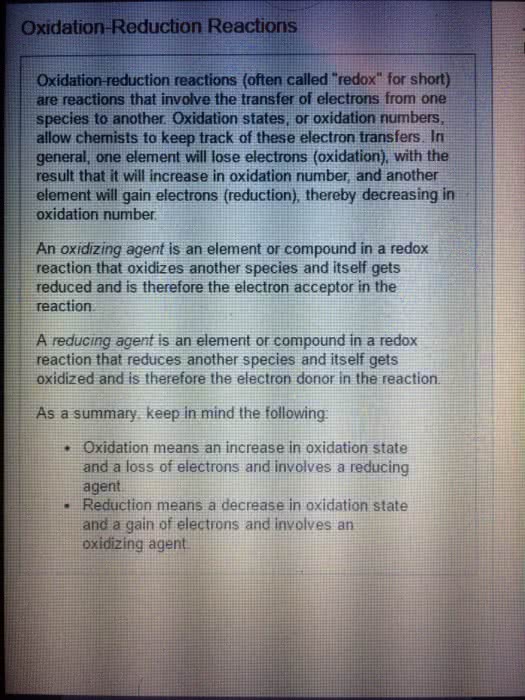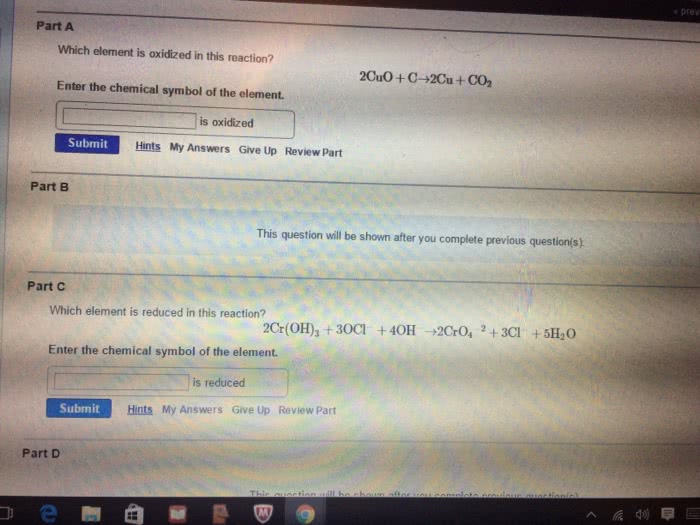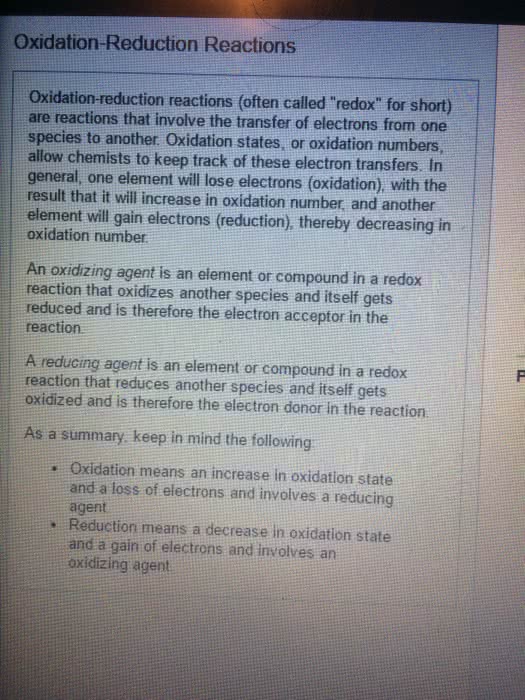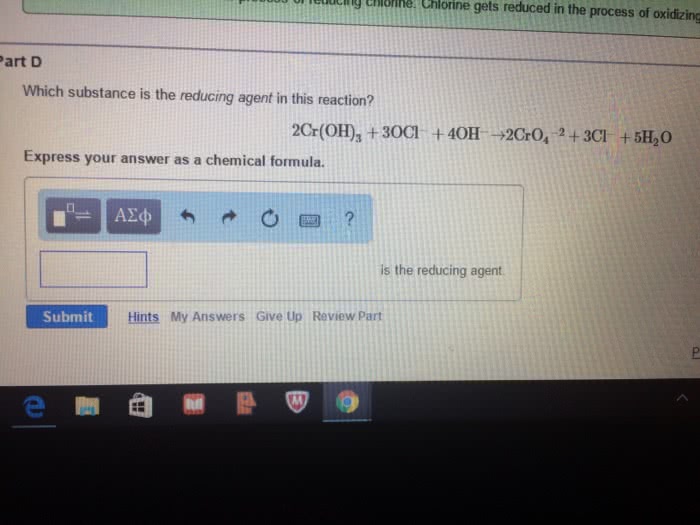Chemistry 1302A/B Chapter Notes - Chapter 4.1: Oxidizing Agent, Electronegativity, Reducing Agent

Redox reaction: oxidation-reduction reaction characterized by a change in the
oxidation sate of one or elements in the reactants
Net transfer of electrons from one reactant to another
○
•
Redox Half-Reactions
The overall redox reaction consists of 2 half-reactions
Oxidation half-reaction: electrons are lost (donated)
○
Reduction half-reaction: electrons are gained (received)
○
•
Reducing agent: The species that donates (loses) electrons
After the reaction takes place, the reducing agent has been oxidized
○
•
Oxidizing agent: The species that accepts (gains) electrons
After the reaction takes place, the oxidizing agent has been reduced
○
•
Oxidation and reduction always occur together
In a balanced equation, the number of electrons lost in the oxidation half-
reaction must equal to those gained in the reduction half-reaction
○
•
Oxidation States
Oxidation states are used to facilitate the electron accounting in redox reactions
•
Rules for assigning oxidation states to species:
The oxidation state is always 0 in a pure element or elemental substance
1.
Assigning oxidation states to the elements in a compound:
Florine is always -1
a.
Group 1 metals are +1
b.
Group 2 metals are +2
c.
Hydrogen is +1 (when bonded to a metal: -1)
d.
Oxygen is usually -2
e.
Other halogens (group 17) are usually -1
f.
2.
The oxidation state is equal to the charge on a monatomic ion
!"#$ %&' (")# $ %*' +,-$ .&
§
3.
In a neutral species, the total must equal 0
/(0 $
1
%&
2
%
1
.&
2
$ 3' 4(05$
1
%6
2
% 6
1
.&
2
$ 3
§
4.
In a complex ion, the total must equal the charge on the ion
!/7
#$1.82% 91%&2$ %&
§
5.
•
In any redox reaction, there must be a change in the oxidation state of one or
more of the elements
•
When a species oxidizes (loses electrons), the oxidation state increases•
When a species reduces (gains electrons), the oxidation state decreases•
Oxidation States of Carbon
Oxidation sate of carbon may be determined by comparing the electronegativity
of carbon to the electronegativity of each atom to which the carbon atom is
bonded
C-H bond: -1 to oxidation state of the carbon
○
C-O bond: +1 to oxidation state of the carbon
○
C=O bond: +2 to oxidation state of the carbon
○
C-C bond: 0 to oxidation state of the carbon
○
•
Steps For Balancing Redox Reactions
Write the reaction as 2 half-reaction1.
In each half reaction, balance the stoichiometric coefficients for all atoms
except H and O
2.
Add /)3to the side deficient in O to balance O3.
Find which side is deficient in H
Acidic conditions: add /#ions to balance out Ha.
Basic conditions: add /):to balance the side defiecient in H and the
same number of :/-to balance out the excess of H and O
b.
4.
Balance the charges in each half-reaction by adding electrons to the side
deficient in negative charge
5.
Multiply half-reactions by coefficient to balance out electrons6.
Add balanced half-reactions, cancel species and check for the overall
stoichiometric and charge balance
7.
4.1 Redox Reactions
Document Summary
Redox reaction: oxidation-reduction reaction characterized by a change in the oxidation sate of one or elements in the reactants. Net transfer of electrons from one reactant to another. The overall redox reaction consists of 2 half-reactions. Reducing agent: the species that donates (loses) electrons. After the reaction takes place, the reducing agent has been oxidized. Oxidizing agent: the species that accepts (gains) electrons. After the reaction takes place, the oxidizing agent has been reduced. In a balanced equation, the number of electrons lost in the oxidation half- reaction must equal to those gained in the reduction half-reaction. Oxidation states are used to facilitate the electron accounting in redox reactions. The oxidation state is always 0 in a pure element or elemental substance. Assigning oxidation states to the elements in a compound: a. b. c. d. e. f. Hydrogen is +1 (when bonded to a metal: -1) The oxidation state is equal to the charge on a monatomic ion.





